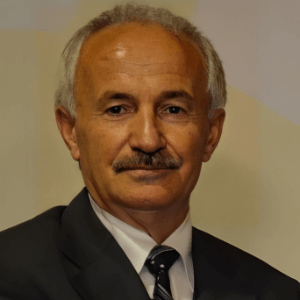Title : Thermomechanical processes and transformations in shape memory alloys
Abstract:
Shape memory alloys take place in a class of advanced structural materials by exhibiting dual memory characteristics, shape memory effect and superelasticity with the recoverability of two shapes at different conditions, in the β-phase region with chemical composition. Shape memory effect is initiated with thermomechanical processes on cooling and deformation and performed thermally on heating and cooling, with which shape of the material cycles between original and deformed shapes in reversible way, and this behavior can be called thermoelasticity. This phenomenon is governed by the thermomechanical transformations, thermal and stress induced martensitic transformations. Thermal induced martensitic transformation occurs on cooling with cooperative movement of atoms in <110 > -type directions on {110} - type plane of austenite matrix, along with lattice twinning and ordered parent phase structures turn into the twinned martensite structures, and twinned structures turn into detwinned martensite structures by means of stress induced martensitic transformations with deformation. Superelasticity is performed in only mechanical manner with stressing and releasing the material in elasticity limit at a constant temperature in the parent austenite phase region, and shape recovery occurs immediately upon releasing, by exhibiting elastic material behavior. Superelasticity is also result of stress induced martensitic transformation, and the ordered parent phase structures turn into the detwinned martensite structures with stressing. It is important that lattice twinning and detwinning reactions play important role in martensitic transformations.
Copper based alloys exhibit this property in metastable β-phase region, which has bcc-based structures. Lattice twinning is not uniform in these alloys, and the ordered parent phase structures undergo the non-conventional layered structures with martensitic transformation. These layered structures can be described by different unit cells as 3R, 9R or 18R depending on the stacking sequences on the close-packed planes of the ordered lattice.
In the present contribution, x-ray diffraction and electron diffraction studies were carried out on copper based CuZnAl and CuAlMn alloys. X-ray diffraction profiles and electron diffraction patterns exhibit super lattice reflections. Critical transformation temperatures of these alloys are over the room temperature. The specimens were aged at room temperature, and a series of x-ray diffractograms were taken during aging. X-ray diffractograms taken in a long-time interval show that locations and intensities of diffraction peaks change with the aging time, and this result refers to the redistribution of atoms in diffusive manner.




